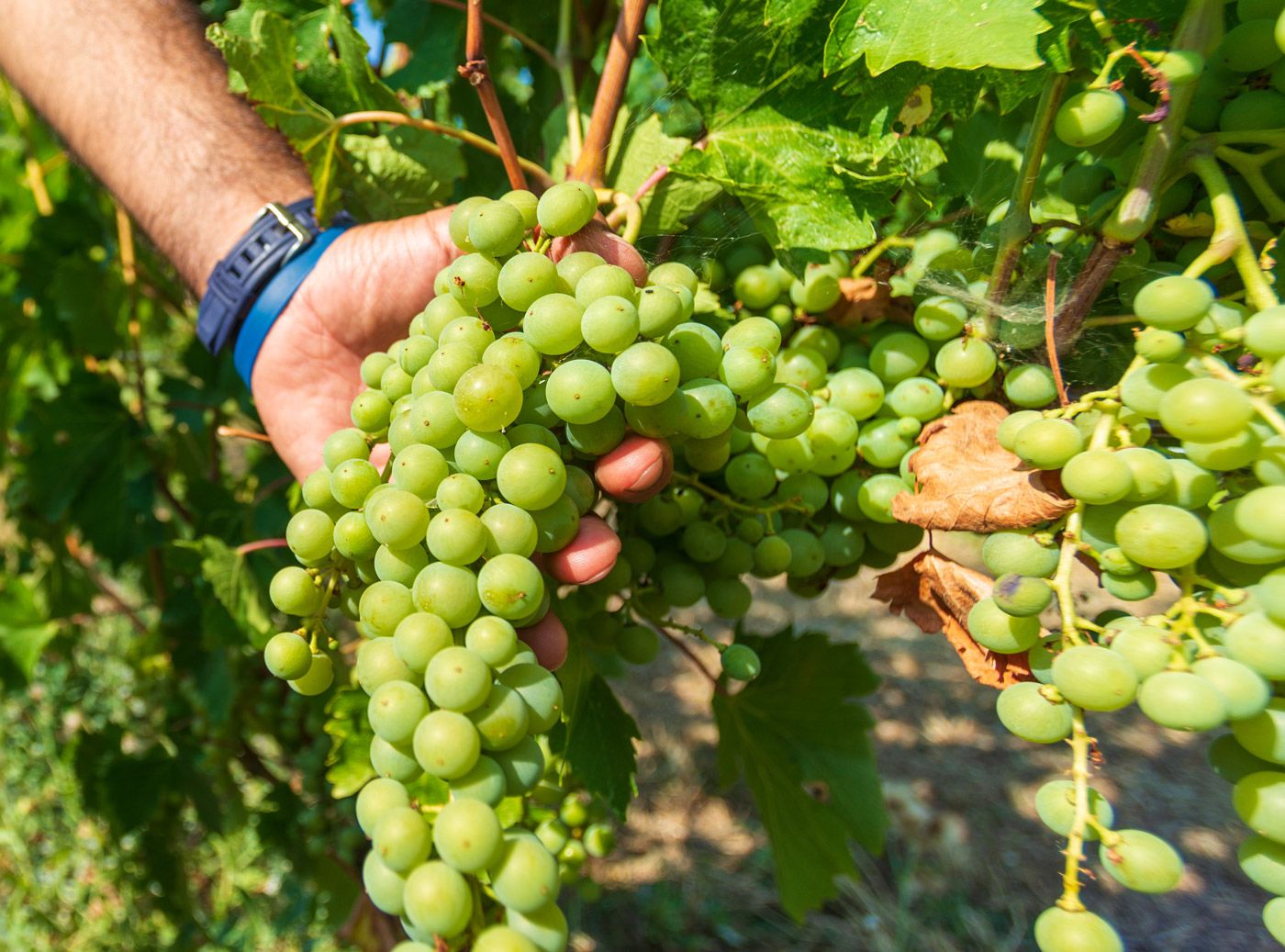Malvasia
Malvasia di Candia Aromatica
Malvasia di Candia Aromatica is part of the vast Malvasia family, which includes red and white grape varieties very different from each other in terms of ampelographic characteristics.
In fact, so many grape varieties bear this name that as early as 1963 Giovanni Dalmasso, an agronomist and author of landmark publications on Italian viticulture, wrote: “If we were even to list all the grape varieties that more or less legitimately bear the name of malvasia – and thus try to establish which have reason to retain this name and which do not – we would have to occupy several pages without hoping to succeed in our intent.”
Today, in Italy alone, nineteen different varieties of Malvasia are registered.
Origin
The name “Malvasia,” which unites so many different grape varieties, seems to derive from Monemvasia or Monovaxia, today a charming village in the Peloponnese, perched on a rocky outcrop and overlooking the sea, and once a strategic port for the Mediterranean wine trade. From here, Greek wines, produced mainly on the island of Crete – named Candia during Venetian rule from 1204 to 1669 – were departing for Europe: sweet wines, made from a blend of different sun-dried grapes, highly prized on the Old Continent where they began to be known as Malvagia or Malvasia.
Importation began in the 13th century, but it was especially from 1463, when Monemvasia was annexed to the Venetian Republic, that the trade in these wines expanded considerably in Europe, and in Venice they achieved such fame that even today taverns where bulk wines are served are called Malvasia.
When Crete (Candia) was occupied by the Ottoman Empire in 1669, the Venetians, in order not to lose their commercial hegemony, began importing some of the Cretan vines into northern Italy and commissioning local peasants to produce sweet, Greek-like wines. Hence, the multiplication of the name Malvasia to designate grape varieties with very different ampelographic characteristics.
Diffusion
Malvasia di Candia Aromatica is mainly cultivated in Italy and especially in Lombardy, for the production of Malvasia dell’Oltrepo Pavese DOC, and in the provinces of Parma, Piacenza and Reggio Emilia, where it is used to make dry and semisweet wines, in still, lightly sparkling, sparkling and passito versions, and where there are three Malvasia DOC wines (Colli di Parma, Colli Piacentini and Colli di Scandiano e Canossa). Officially registered in the National Vine Variety Catalogue since 1970, in Italy the vine currently occupies a cultivation area of around 890 ha.
Cultivation
A white grape variety with medium vigor and constant production, Malvasia di Candia Aromatica loves cool, fertile soils and climates that are not too dry. It proves to be quite resistant to winter cold and late frosts, while it is prone to coulure and is quite susceptible to downy mildew.
Ampelographic characteristics
Malvasia di Candia Aromatica has medium, glabrous, glossy green, pentagonal and pentalobed leaves and a medium to large, pyramidal, elongated, spreading cluster with numerous wings. The berry – characterized by a distinct muscat flavor that brings the variety closer to the Muscat family than to the Malvasia family – is golden yellow, round, with a thick, pruinose skin and a juicy, loose flesh.
The wine – Malvasia di Candia Aromatica
Malvasia di Candia Aromatica lends itself to a variety of wine styles: ranging from still wines to sparkling wines, from dry wines to sweet wines, and even orange wines. The type of vinification influences the color, which can range from straw yellow to amber.
Generally, all wines made from Malvasia di Candia Aromatica grapes are endowed with good freshness and surprising aromatic complexity. In still wines can be perceived notes of white and yellow fruits, citrus fruits, aromatic herbs and mineral hints whereas in sweet and raisin wines – where the aromatic richness reaches its peak – notes of honey, dried fruits, caramel and balsamic hints dominate.
Pairings
In the dry version Malvasia di Candia Aromatica can accompany cured meats-particularly those from the Parma and Piacenza area accompanied by torta fritta, delicate vegetable-based first courses, fish and white meats but also battered vegetables, vegetable pies and sometimes semi-mature cheeses.
In sweet and passito versions it goes well with white fruit tarts, almond cakes and dry pastries. Passito may also be suitable for aged and blue cheeses.




